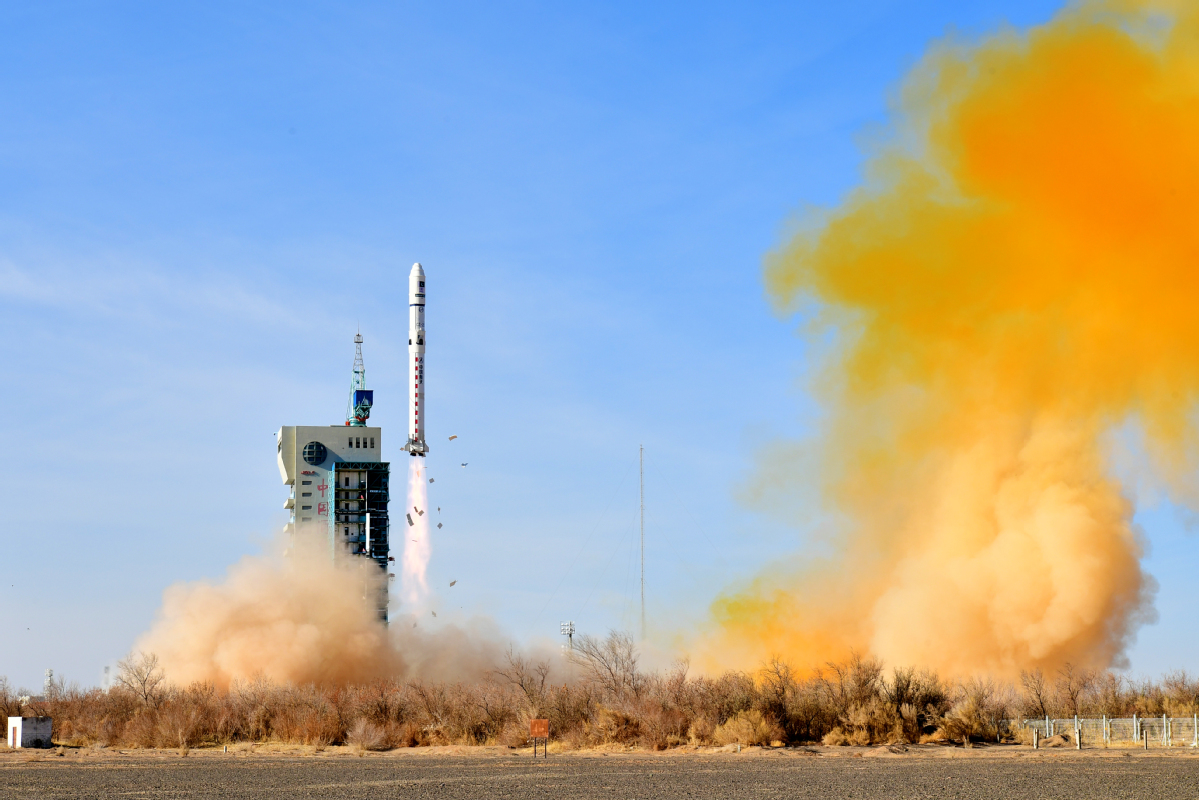
A Long March 2D carrier rocket carrying three satellites, including a Pakistani satellite named PRSC-EO1, blasts off from the Jiuquan Satellite Launch Center in Northwest China, on Jan 17, 2025. [Photo by Wang Jiangbo/for chinadaily.com.cn]
China launched a Long March 2D carrier rocket on Friday afternoon, deploying three spacecraft, including an advanced atmospheric research satellite, into their preset orbit.
The rocket blasted off at 12:07 pm at the Jiuquan Satellite Launch Center in the Inner Mongolia autonomous region and soon delivered the Tianlu 1, PRSC-EO1 and Lantan 1 into their orbit, according to China Aerospace Science and Technology Corp, the maker of the rocket.
Designed and built by GalaxySpace, a Beijing-based private satellite maker, the Tianlu 1 is carrying several advanced scientific equipment to measure temperature, density, composition of middle and upper atmosphere, and features high resolution, around-the-clock operational capability as well as multi-element detection capacity, according to Xi Bin, a senior spacecraft designer at GalaxySpace.
He explained that it is difficult for most of the satellites and aircraft to reach middle and upper atmosphere, so it needs specifically designed satellites to measure physical elements of those layers.
"Such data is of great importance to forecasting extreme weather events and space environment and studying climate change. The data will also help researchers to establish atmospheric models, study ionosphere and analyze the vertical distribution of air pollutants," he said.
Upon its in-orbit delivery, the satellite will be used by the Jianghuai Frontier Innovation Technology Center in Hefei, capital of East China's Anhui province.